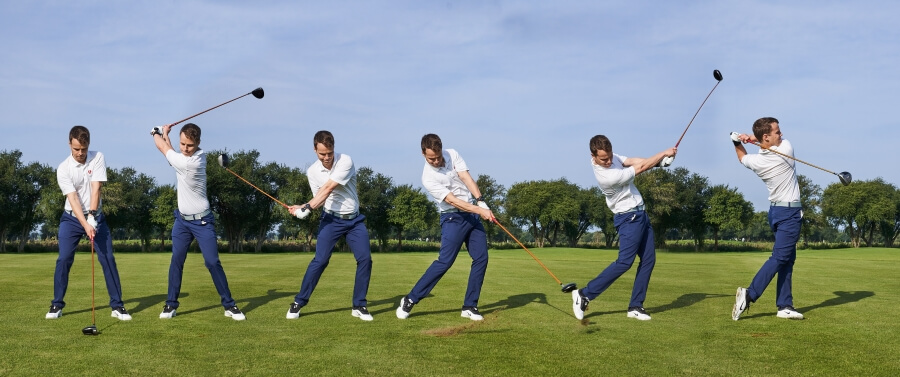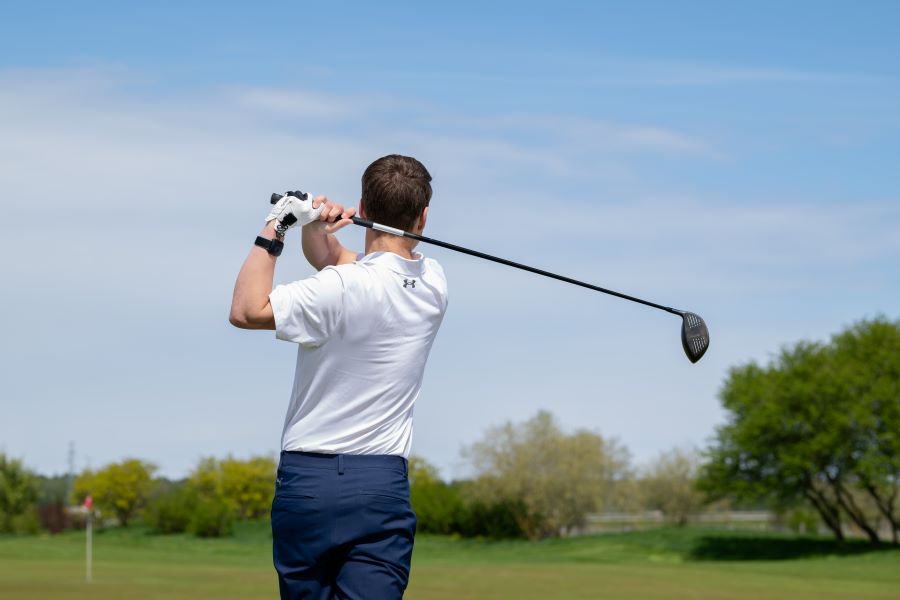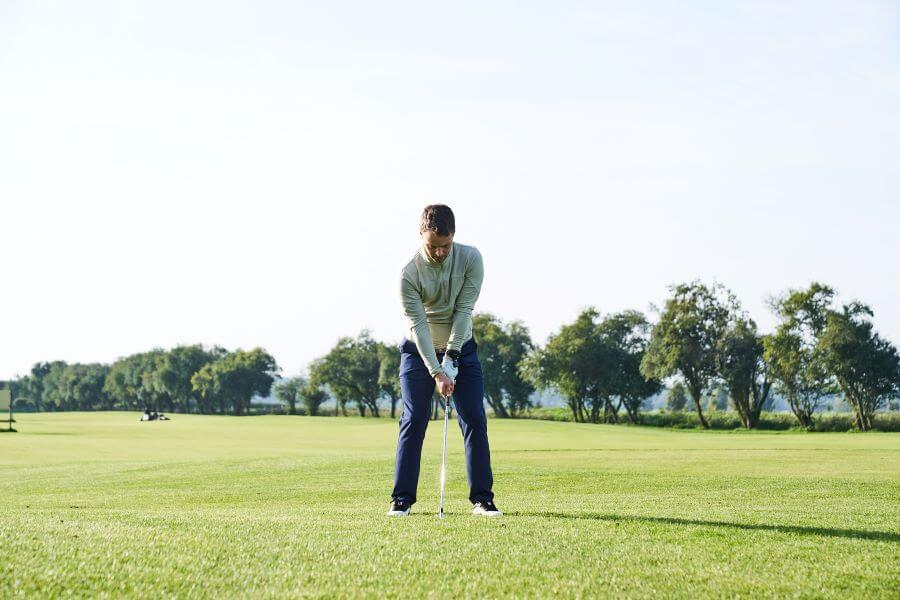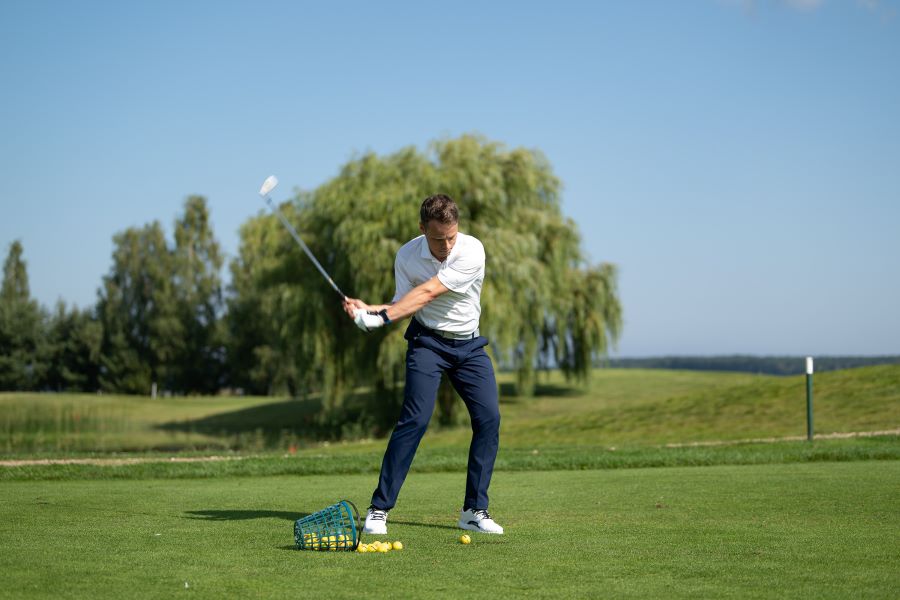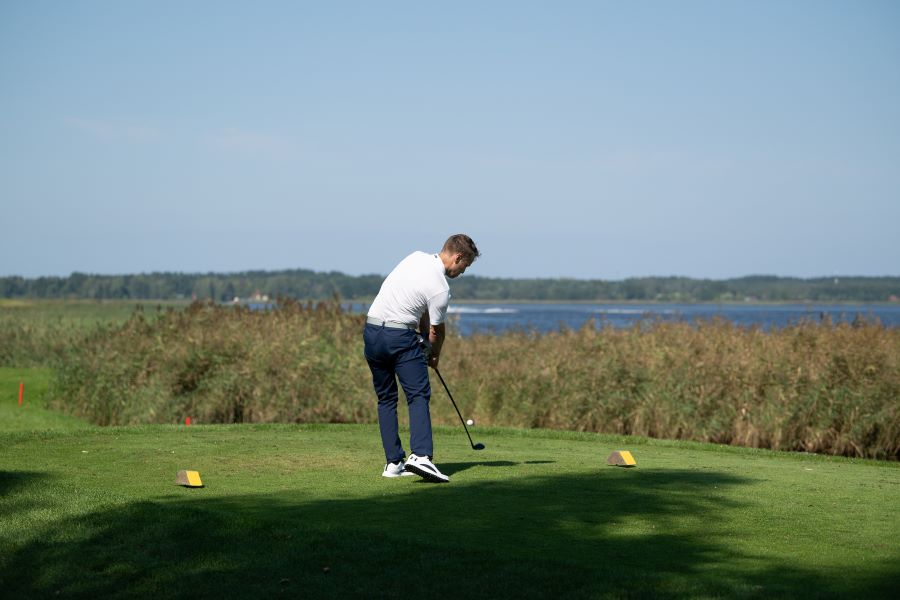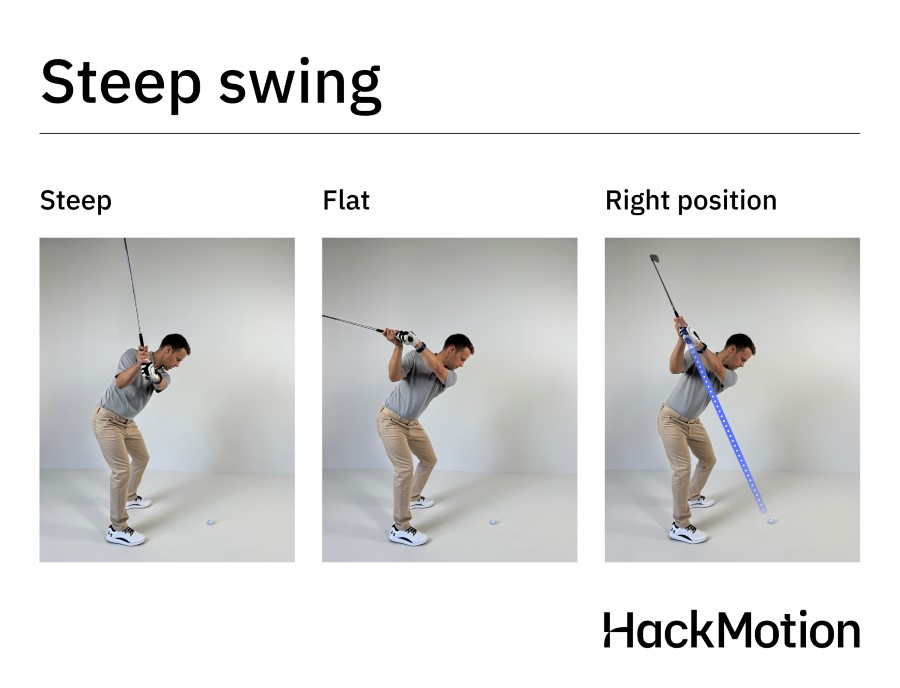Losing Distance with Irons? Here’s What You Need to Know to Fix It
Hitting a 7 iron 150 yards is much different than hitting a 7 iron 135 yards. The longer you can hit your irons, the more short iron approach shots you will have into a green, and that’s a good thing!
Although we can fully agree that distance in golf is not everything, if you are losing distance with irons, you are losing strokes off your game.
Believe it or not, most golfers are losing distance with their irons for one specific reason.
We will show you this reason and a few others you should scan through before you make any radical changes in your game.
Key Takeaways
If you don’t have the time to read our entire guide on losing distance with irons, here are the key things you should take away with you right now.
- The main reason golfers lose distance with their irons is that their lead wrist is too extended through the impact position. The extra extension decreases speed, increases launch angle, and decreases consistency in the shots.
- Having the proper setup and ball position can increase iron distance; move the ball more toward the middle and add just a little weight to your lead side.
- Gain some extra speed by increasing your overall body strength; there is a direct correlation between body strength and the ability to generate clubhead speed.
- Check your clubs and make sure they are the right fit for you, and they have some new technological advances that help improve overall speed.
Why Am I Losing Distance with My Irons?
Losing distance with your irons on a consistent basis is a sign that there is something not quite right in your golf game.
If you have one bad round, chalk it up to being tired or weaker that day, but when it comes to consistent distance loss, here are the most common reasons you will see this happen.
Losing Ulnar Deviation on the Downswing
One of the things we have discovered from analyzing more than 1,000,000 golf swings of professionals and incredible amateurs is the ulnar deviation angles on the downswing.

Professionals are able to keep their wrist angles, and then just before the ball, they are able to rotate and hit square and solid shots. The amateur player tends to lose ulnar deviation and flip the club just before impact.
The result is not just a lack of distance with the irons but also a loss of consistency in the strike.
Too Much Lead Wrist Extension at Impact
At impact, the lead wrist needs to be flexed instead of extended. Most amateur golfers get to impact, and they have too much extension in their lead wrist.
This extension changes the angle of the clubface, adds more loft, and sometimes creates a shot that travels from left to right with less power.
The key is to be in a position of flexion at impact.
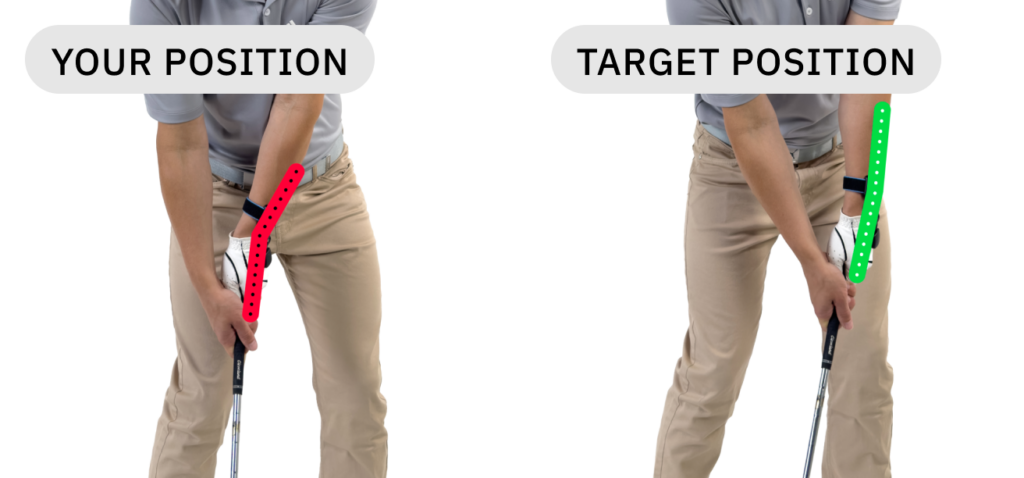
Loss of Swing Speed
To hit the ball far, you need speed. Slowing down your swing will create a loss of distance. Of course, most golfers are not intentionally decreasing their speed.
Instead, old age or a lack of fitness activities makes players lose distance.
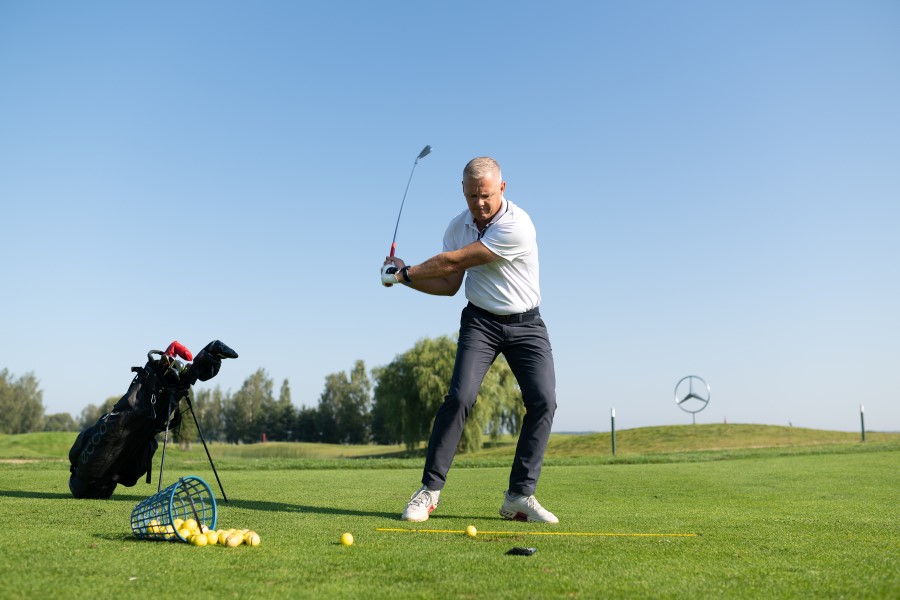
Tempo and accuracy matter, but if you want more distance, you need more speed.
Golf Clubs that No Longer Fit Your Game
If you are playing with clubs that are not properly fitted to your swing, it will cost you distance.
I’ve seen many amateur players choosing irons that are simply too heavy for them.
This naturally slows down the speed and makes it very difficult to get the ball’s flight and distance needed.
Check your golf club weights, lie angles, and shaft flex. Also, look for golf clubs created in the last few years that offer premium distance technology.
Incorrect Ball Position
Having the ball too far back or forward in your stance can lead to an incorrect angle of attack.
This angle of attack will either launch the ball too high or too low. If you don’t find that optimal peak height in your golf shot, you won’t end up with the optimal distance.
Most amateurs who struggle with distance on their iron shots are placing the ball too far forward, up where the hybrids and driver should be.
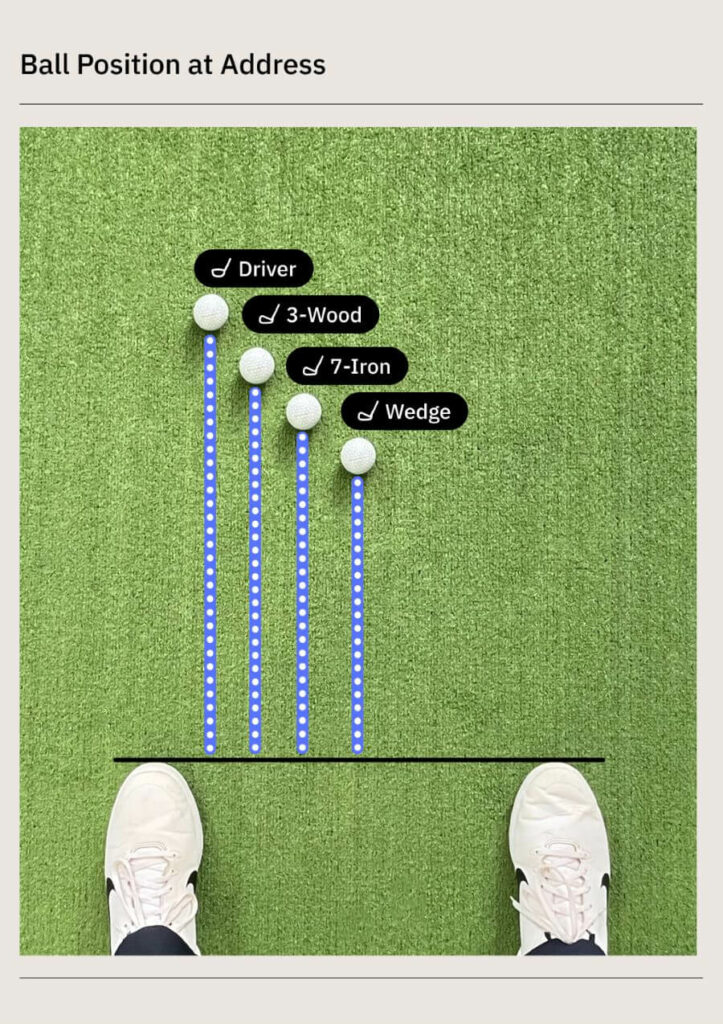
How to Gain Distance with Your Irons
Here are the best ways to gain your distance back with your irons and improve your scoring at the same time.
No Wrist Hinge Drill
The Art of Simple Golf does a great video on wrist hinges and their importance when it comes to iron distance and accuracy.
Many amateur golfers get hung up on the concept of hinging their wrists as part of the backswing.
In reality, with the weight of the club and a good body rotation, much of this will happen naturally.
For the no-wrist hinge drill, you can simply feel as though you will take the club back with much less wrist action and more body action.
The drill helps to naturally increase ulnar deviation through impact, an important change for any player.
Use Ground Forces
When gaining distance with your irons, the ground is your friend.
The best players in the game utilize the ground to help increase resistance and power. As you move through the golf ball, you will want to ensure that you are pushing down and through the ground.
The more you can do this (instead of just trying to stay balanced or on your feet), the easier it is to generate extra power, traction, and control.
Start to change your concept of what the ground is there for, and your iron shots will benefit greatly.
Perfect the Setup
To dial in your ideal iron setup, follow the steps in the printable below. This simple test can help you discover the most consistent ball position for clean, reliable contact.
Iron Ball Position Test – Step by Step:
- Gather Your Tools: Head to the range with a portable launch monitor and alignment sticks.
- Set Up Ball Positions: For each iron, test three ball positions: center of your stance, slightly behind center, and slightly ahead of center.
- Hit and Observe: Hit a few shots from each ball position and record how flight and distance change.
- Analyze the Data: Use the launch monitor to see which position gives you the best strike and consistency.
- Refine Your Setup: Adjust your default ball position based on what produces your most reliable iron shots.
Swing with Extra Weight
Warming up by swinging two clubs together is a simple way to activate your muscles and prep your body for more speed.
Find a speed training program that you enjoy working with and can do consistently. This is the best way to add some yards to your irons.
Swing mechanics is a major issue in why golfers lose distance with their irons, but so is a lack of strength. Putting in a little time to gain extra leg and arm strength will lead to longer iron shots.
Use a Little Weight on the Lead Side
With an iron shot, you do want to create a descending angle of attack. One of the best ways to do this is to add a little weight to your lead side as you set up to hit.
The extra weight on the lead side creates a better turn and shift and increases the downward angle of attack.
Keep 60% of your weight on your left side when hitting wedge shots, and then gradually move it back a little so that when you get to your fairway woods and driver, the weight is evenly distributed.

Increase Shoulder Turn
For some reason, when golfers get irons in their hands, they try to manipulate them more with their hands and wrists.
It’s really quite common because of the shorter club length, but it’s not going to help you when it comes to distance.
To maximize distance, increase your shoulder turn and get your shoulder to fit fully under your chin as part of the backswing. Sometimes, when trying to increase shoulder turn, you will have a tendency to pull your golf iron shots.
This video from Eric Cogorno shows exactly what the shoulders should look like in the iron swing to gain distance and accuracy.
Clubface Indicator Stick and Cup Drill
For this drill from Coach Lockey, you can quickly understand and visualize the concept of a flexed wrist at impact.
With the indicator stick on, the goal is to ensure that with a slow-motion swing, you end up getting that indicator stick to fit in a cult just ahead of the normal ball position.
The only way to do this is to add flexion on your downswing as opposed to extension.
Working with this drill will also show you the importance of a flat lead wrist at the top of the backswing. It’s much easier to get that indicator stick in the right spot at impact if you are in the right spot at the top.
Summary
Wrist action in the golf swing will cause you to lose distance. If you can’t quite square the clubface, don’t expect that a new club or a little wind behind your back is going to make the difference.
Get out to the range with your HackMotion and immediately feel the difference in your iron shots created by proper wrist action and control.





